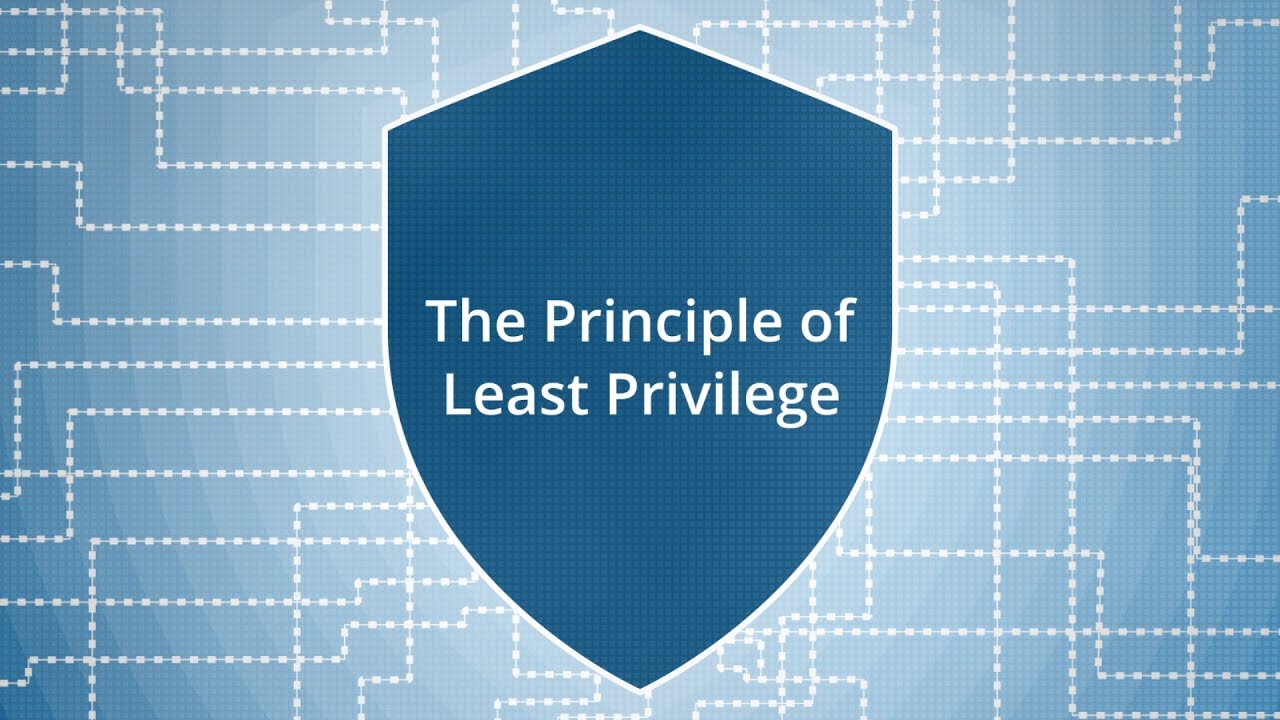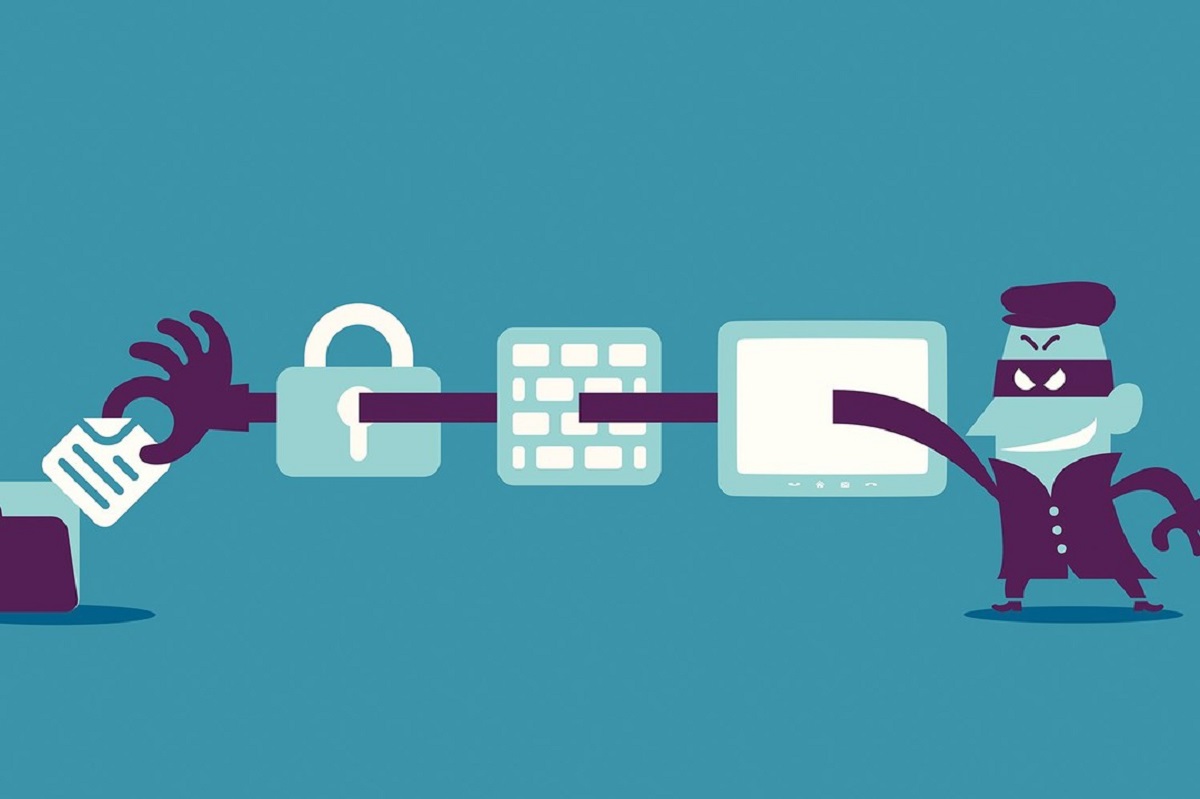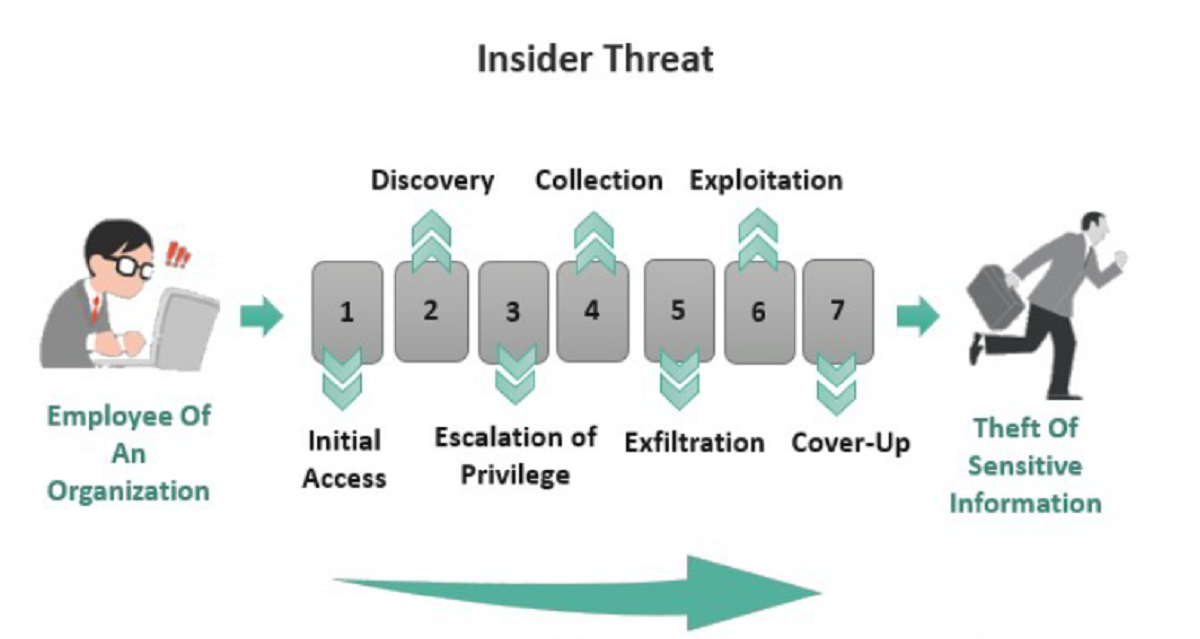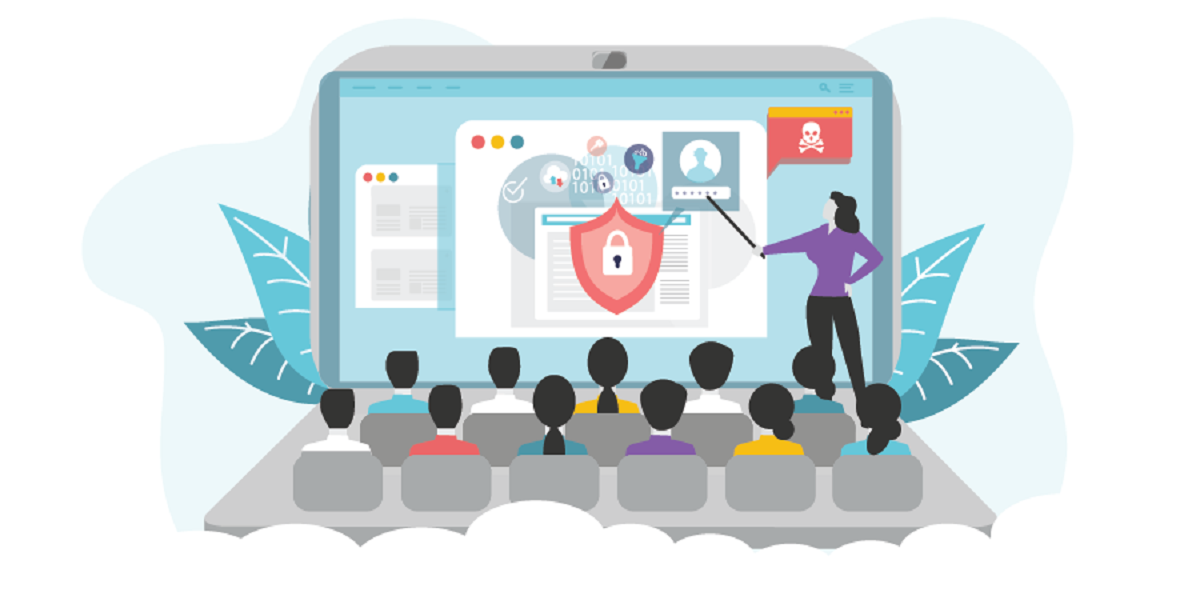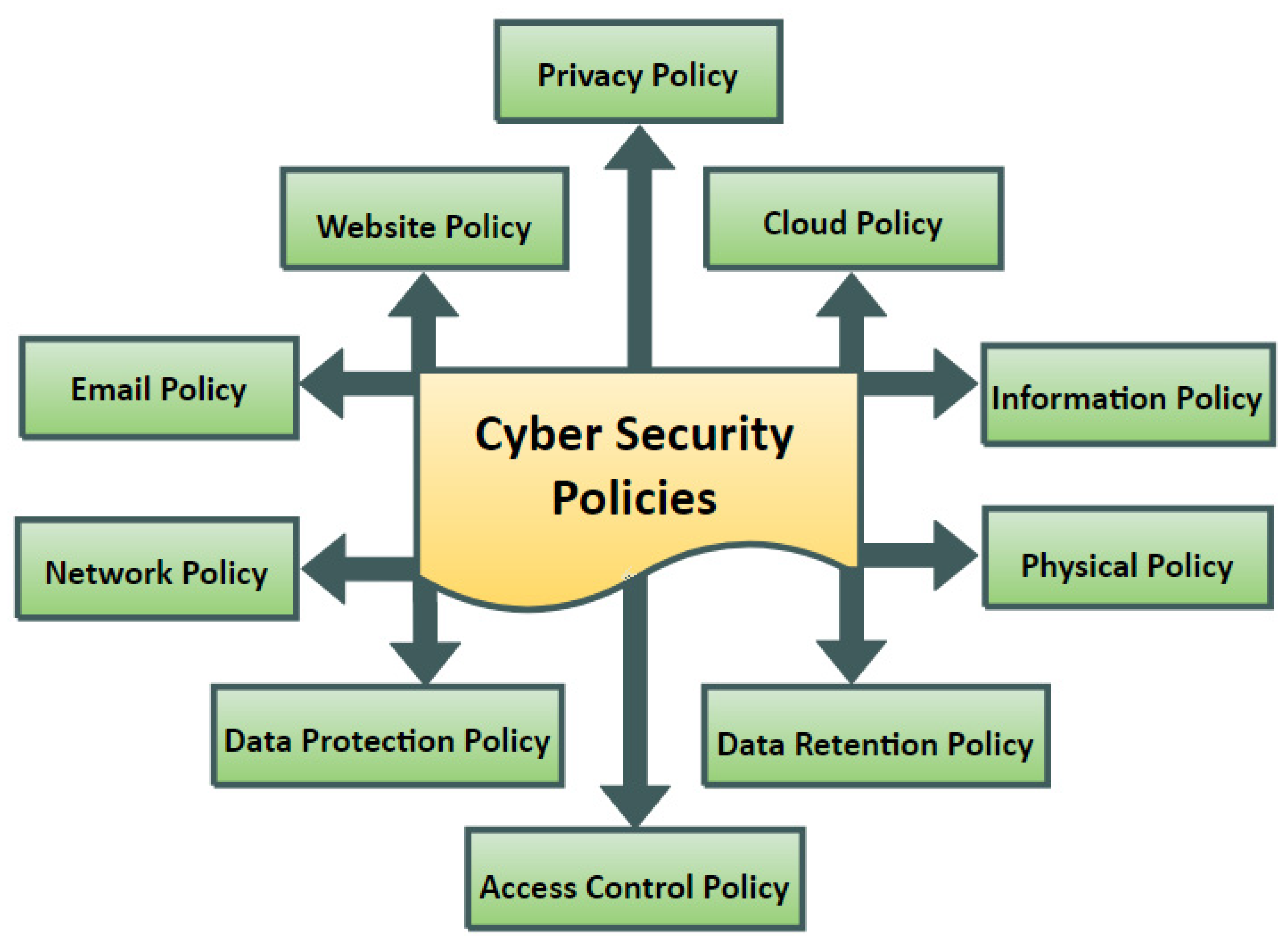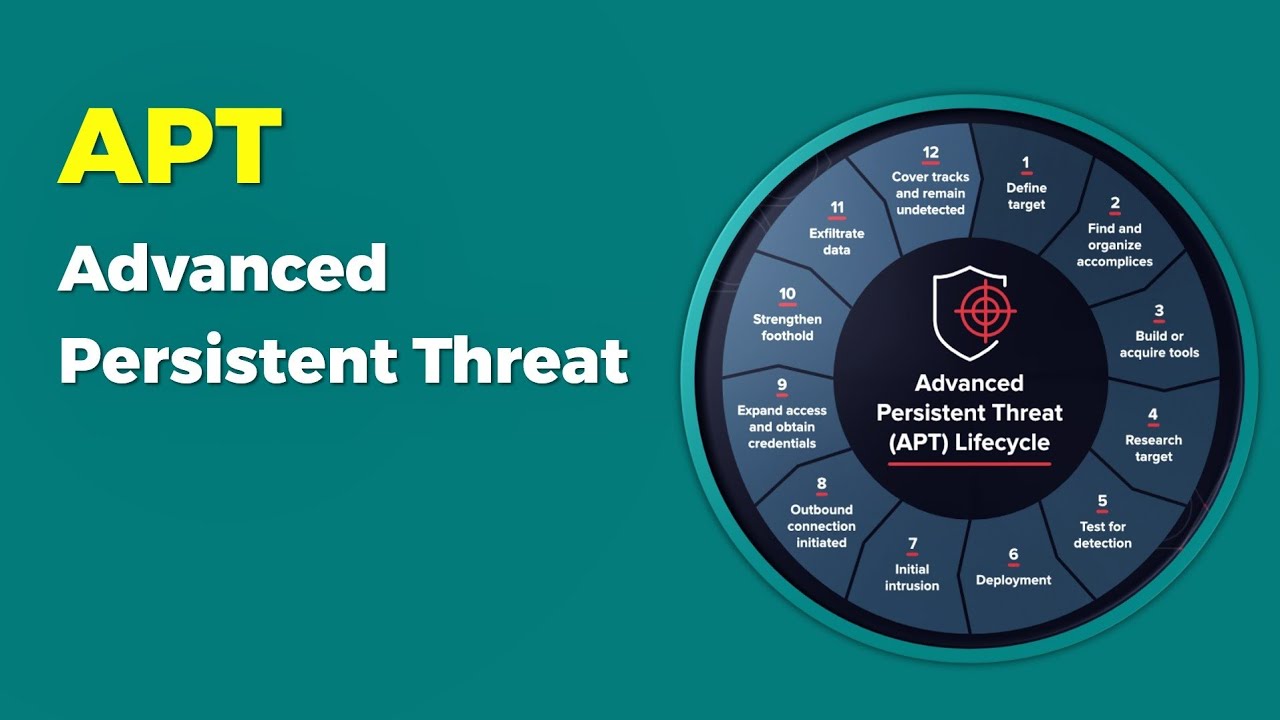Introduction
Cybersecurity is a critical concern for individuals and organizations in the digital age. With the increasing frequency of cyber threats and data breaches, it has become essential to implement robust security measures to protect sensitive information. One such measure is the principle of least privilege, which plays a vital role in ensuring the confidentiality, integrity, and availability of data.
Least privilege is a security concept that restricts user access rights to only what is necessary for their specific job functions. In other words, it grants users the minimum level of access required to perform their tasks, while preventing them from accessing other sensitive resources or performing actions that are not essential to their roles.
By implementing the principle of least privilege, organizations can significantly reduce their attack surface, limiting the potential impact of security breaches. Moreover, it helps prevent lateral movement within a network, minimizing the risk of unauthorized access and privilege escalation.
This article aims to provide an in-depth understanding of least privilege in the context of cybersecurity. It will explore the definition of least privilege, its benefits, and the principles behind its implementation. Additionally, it will discuss how least privilege works, the challenges of implementation, best practices, and available tools and technologies to aid organizations in adopting a least privilege approach.
So, whether you are an individual looking to enhance your cybersecurity practices or an organization seeking to bolster your overall security posture, this article will equip you with the knowledge necessary to implement least privilege effectively.
Definition of Least Privilege
Least privilege is a cybersecurity principle that revolves around the concept of providing users with the minimum level of access required to perform their job functions. It aims to restrict user privileges, ensuring that they only have access to the resources and actions necessary to carry out their tasks effectively.
At its core, least privilege focuses on the principle of “need to know” and “need to access.” This means that users should only be granted access to the specific data, applications, systems, or network resources that are essential for their work responsibilities. Any additional privileges beyond what is necessary can potentially introduce security risks and increase the organization’s attack surface.
By implementing least privilege, organizations can reduce the potential impact of security breaches. If a user’s account is compromised or an insider threat occurs, the restricted access limits the attacker’s ability to move laterally within the network and access sensitive information or perform malicious actions.
It is important to note that least privilege is not a one-time implementation, but an ongoing process. Regular access reviews and updates are necessary to ensure that user access aligns with their current job responsibilities and organizational role changes.
Overall, the main goal of least privilege is to enforce a strong security posture by limiting access privileges, minimizing the potential for human error, mitigating insider threats, and reducing the overall attack surface of an organization’s network.
Benefits of Implementing Least Privilege
Implementing the principle of least privilege in cybersecurity brings forth numerous benefits to individuals and organizations. Let’s explore these benefits:
1. Enhanced Security: By implementing least privilege, organizations can significantly enhance their security posture. Restricting user privileges reduces the risk of unauthorized access, mitigates the impact of malicious activities, and minimizes the attack surface for potential cyber threats. This ensures that sensitive information remains protected and confidential.
2. Improved Data Privacy: Least privilege helps organizations ensure compliance with privacy regulations, such as the General Data Protection Regulation (GDPR). By limiting access to personal data only to authorized personnel, organizations can prevent data breaches and unauthorized handling of sensitive information, thus enhancing data privacy.
3. Mitigated Insider Threats: Insider threats are a significant concern for organizations. Limiting user access to only what is necessary reduces the potential for malicious insiders to cause harm or leak sensitive information. It prevents unauthorized privilege escalation and restricts users from abusing their privileges for personal gain.
4. Minimized Lateral Movement: In the event of a security breach, least privilege limits the attacker’s ability to move laterally within the network. By granting users access only to specific resources and systems, the impact of a compromised account or an attacker gaining unauthorized access is contained, preventing widespread damage.
5. Simplified Privilege Management: Implementing least privilege streamlines privilege management processes. It allows for granular control over user access rights, making it easier to assign and revoke privileges based on job responsibilities. This reduces administrative overhead and ensures that users have the necessary access without unnecessary privileges.
6. Minimized Human Error: Human error is a common cause of security incidents. Least privilege helps minimize the risk of accidental data breaches or unauthorized actions by limiting the scope of user access. By reducing the number of privileges, potential mistakes that could lead to security incidents are mitigated.
In summary, implementing the principle of least privilege in cybersecurity offers substantial benefits, including enhanced security, improved data privacy, mitigation of insider threats, minimized lateral movement, simplified privilege management, and a reduction in human error. These advantages make least privilege a crucial component of a robust cybersecurity strategy.
Principle of Least Privilege in Cybersecurity
The principle of least privilege (POLP) is a fundamental concept in cybersecurity that focuses on limiting user access rights to the bare minimum necessary for their job functions. It revolves around the idea that users should only have access to the specific resources, applications, systems, or network segments that are essential for their tasks, and no more.
The POLP operates on the principle of “need-to-know” and “need-to-access.” By restricting user privileges to the least amount required, organizations can effectively minimize the potential impact of both external attacks and insider threats.
When implementing the principle of least privilege, organizations should consider the following key aspects:
1. User Roles and Responsibilities: An essential step in implementing POLP is identifying and defining user roles within the organization. This involves categorizing employees based on their job functions and determining the access privileges necessary to perform those functions. By establishing clear roles and responsibilities, organizations can assign appropriate access rights, ensuring that each user has the minimum privileges required for their tasks.
2. Access Control: Access control mechanisms play a crucial role in enforcing the principle of least privilege. Organizations should implement access controls through technologies such as role-based access control (RBAC), multi-factor authentication (MFA), and strong password policies. These measures help ensure that only authorized users can access critical resources and systems, further minimizing the attack surface.
3. Segmentation and Isolation: Segmenting networks and isolating sensitive resources is another important aspect of least privilege in cybersecurity. By dividing the network into separate zones based on functionality or security requirements, organizations can limit access between different segments. This prevents unauthorized users from traversing the network and gaining unauthorized access to critical assets.
4. Regular Access Reviews: To maintain the principle of least privilege, periodic access reviews are essential. Organizations should conduct regular audits to ensure that user access aligns with their current roles and responsibilities. This includes revoking unnecessary privileges for users who have changed roles or no longer require certain access rights.
5. Monitoring and Logging: Implementing robust monitoring and logging mechanisms allows organizations to track user activities and detect any abnormal behavior or potential security breaches. By closely monitoring user actions, organizations can identify and respond to any unauthorized access attempts or suspicious activities promptly.
By following the principle of least privilege in cybersecurity, organizations can significantly enhance their security posture, minimize the risk of security incidents, and protect critical assets from unauthorized access. It is an essential practice that should be integrated into every cybersecurity strategy to safeguard against potential threats and ensure data confidentiality, integrity, and availability.
How Least Privilege Works
Implementing the principle of least privilege (POLP) involves several key mechanisms and practices to ensure users are granted only the minimum privileges required for their job functions:
1. User Authentication: The first step in implementing least privilege is authenticating users. This involves verifying their identities through various authentication methods such as passwords, biometrics, or multi-factor authentication. User authentication ensures that only authorized individuals gain access to the system.
2. User Authorization: After authentication, the next step is user authorization. Authorization involves granting permissions and access rights to specific resources or functionalities based on predefined roles and responsibilities. User authorization should strictly follow the principle of least privilege, ensuring that users are granted only the minimum necessary privileges to perform their tasks effectively.
3. Role-Based Access Control (RBAC): Role-based access control is a widely used method for implementing least privilege. It involves defining roles within an organization and assigning permissions to those roles. Instead of granting privileges to individual users, privileges are associated with specific roles. This allows for easier management of access rights and ensures that users receive the appropriate level of access based on their role.
4. Permission Management: Permission management involves assigning and maintaining access permissions for various resources such as files, databases, applications, or network segments. It is essential to regularly review and update permissions to ensure that users only have access to the resources necessary for their job functions. This helps prevent situations where users may accumulate unnecessary privileges over time.
5. Access Control Lists (ACLs): Access Control Lists are used to define specific permissions for individual users or groups for a particular resource. ACLs allow organizations to fine-tune access permissions, granting or denying specific privileges to specific users or groups. By carefully managing ACLs, organizations can enforce the principle of least privilege and ensure granular access control.
6. Monitoring and Auditing: Monitoring user activities and auditing access logs are crucial for maintaining least privilege. By monitoring user actions, organizations can detect any suspicious behavior or unauthorized access attempts. Auditing access logs allows organizations to track and investigate any potential security incidents or anomalies, ensuring the principle of least privilege is upheld.
In summary, implementing least privilege involves authenticating users, authorizing access based on predefined roles, utilizing role-based access control (RBAC), managing permissions, defining access control lists (ACLs), and monitoring user activities. By combining these mechanisms, organizations can enforce the principle of least privilege, ensuring that users have only the minimum necessary privileges to perform their job functions, reducing the risk of unauthorized access and potential security breaches.
Implementing Least Privilege in an Organization
Implementing the principle of least privilege (POLP) requires careful planning and systematic implementation within an organization. Here are some crucial steps to follow when implementing least privilege:
1. Conduct a Privilege Assessment: Begin by conducting a comprehensive assessment of the organization’s privileges and access controls. Identify the privileges granted to different user roles and determine if they align with the principle of least privilege. This assessment helps identify any excessive privileges or potential vulnerabilities that need to be addressed.
2. Define User Roles and Responsibilities: Clearly define the roles and responsibilities of employees within the organization. Categorize employees based on their job functions and determine the specific privileges required for each role. This ensures that access privileges are tailored to the needs of each position, minimizing the risk of excessive privileges.
3. Implement Role-Based Access Control (RBAC): RBAC is a widely adopted method for implementing least privilege. Implement RBAC by creating roles and associating specific permissions with those roles. Assign users to the appropriate role based on their job responsibilities. This allows for easier privilege management and ensures that users only have access to resources necessary for their roles.
4. Regularly Review and Update Access Privileges: Conduct periodic reviews of user access privileges to ensure they align with the current responsibilities of each user. Remove any unnecessary or excessive privileges that users may have accumulated over time. Regularly updating access privileges helps maintain the principle of least privilege as organizational roles evolve.
5. Implement Just-In-Time (JIT) Privilege Access: Just-In-Time (JIT) access provides users with temporary access to resources on a need-to-know basis. This approach grants access for a specific duration or session, ensuring that privileges are only granted when necessary and are revoked once the user’s task is complete. JIT access further minimizes the attack surface and reduces the risk of unauthorized access.
6. Educate and Train Users: User education and training are essential components of implementing least privilege. Ensure that employees understand the principle of least privilege and why it is important in enhancing cybersecurity. Train users on the appropriate usage of privileges and the potential risks associated with granting excessive access.
7. Implement Monitoring and Alerting: Deploy monitoring and logging systems to track user activities and detect any unauthorized access attempts or suspicious behavior. Implement alerting mechanisms to notify security teams of any potential security incidents related to privileged access. Monitoring and alerting systems are crucial for maintaining least privilege and promptly addressing any security concerns.
Implementing least privilege within an organization requires a comprehensive approach involving privilege assessments, role definition, RBAC implementation, regular access reviews, JIT privilege access, user education, and monitoring. By following these steps, organizations can effectively enforce the principle of least privilege, reducing the attack surface and enhancing the overall security posture.
Challenges and Considerations in Implementing Least Privilege
While implementing the principle of least privilege (POLP) is crucial for enhancing cybersecurity, there are several challenges and considerations that organizations need to address:
1. Complexity of Permissions and Access: Managing permissions and access rights can be complex, especially in large organizations with numerous users and resources. It can be challenging to accurately define and assign the minimum level of privileges required for each role, particularly in highly dynamic environments where job responsibilities may frequently change.
2. User Resistance and User Experience: Implementing least privilege may lead to resistance from users who may feel that their freedom and flexibility are being restricted. Users may also experience increased friction in accessing resources due to the additional barriers introduced by the principle of least privilege. Striking a balance between security and usability is essential to mitigate these challenges.
3. Compatibility Issues: Implementing least privilege may reveal compatibility issues with legacy systems or applications that rely on elevated privileges. It can be challenging to adapt these systems to adhere to the principles of least privilege without compromising their functionality or causing disruptions to business operations.
4. Privilege Elevation: Some tasks and activities may require temporary elevation of privileges, even for users with limited access rights. Organizations need to carefully evaluate and define processes for privilege elevation to ensure that it is performed securely and only when necessary. Improper privilege elevation can lead to potential security vulnerabilities or exploitation by attackers.
5. Effectiveness of Identity and Access Management (IAM) Solutions: Organizations heavily rely on identity and access management solutions to enforce least privilege. However, there may be challenges in implementing and maintaining effective IAM solutions, including issues with integration, compatibility, training, and ongoing management of access rights. Organizations need to carefully evaluate and select IAM solutions that best align with their least privilege objectives and requirements.
6. Regulatory Compliance: Organizations operating in regulated industries need to ensure that their implementation of least privilege complies with industry-specific security standards and regulations. Balancing compliance requirements with the principles of least privilege can pose challenges, as compliance measures may sometimes conflict with the concept of granting only minimum access rights.
Addressing these challenges and considerations requires proper planning, continuous monitoring, and a strategic approach to implement least privilege effectively. Organizations should involve stakeholders from different departments, including IT, security, and business units, to navigate these challenges and mitigate potential risks.
Best Practices for Least Privilege Implementation
Implementing the principle of least privilege (POLP) effectively requires following key best practices:
1. Conduct a Privilege Assessment: Begin by conducting a thorough assessment of privileges within the organization. Identify all user roles and the associated access rights previously granted. This assessment will help identify excessive privileges and areas requiring improvements to align with least privilege principles.
2. Implement Role-Based Access Control (RBAC): RBAC provides a structured approach to least privilege implementation. Define roles based on job responsibilities and assign specific permissions to each role. This approach streamlines access management, simplifies authorization processes, and ensures users have the necessary privileges without excessive access.
3. Regularly Review Access Rights: Conduct regular access reviews to validate and update user access rights. This ensures that privileges align with current job responsibilities and eliminates any accumulated excessive access. Regular reviews help maintain least privilege and keep user access rights up-to-date.
4. Segmentation and Isolation: Implement network segmentation and isolation to restrict access between different areas of the network. This helps contain potential breaches and prevent unauthorized lateral movement by isolating sensitive data and resources. Segmenting the network enhances security and minimizes the potential impact of security incidents.
5. Implement Just-In-Time (JIT) Privilege Access: JIT access grants temporary privileges to users on a need-to-know basis. Only the minimum necessary privileges are provided at the time they are required. Implementing JIT access helps minimize the attack surface and reduces the risk of unauthorized access or misuse of privileges.
6. Implement Multi-Factor Authentication (MFA): MFA adds an extra layer of security to user authentication. Enforce the use of MFA for privileged accounts to ensure that access is granted only to authorized individuals. MFA significantly enhances security by requiring multiple factors to verify user identity, making it harder for unauthorized users to gain access even with compromised credentials.
7. Provide Ongoing Training and Awareness: Educate users and raise awareness about the importance of least privilege. Train employees to understand their responsibilities regarding access rights and the potential risks associated with granting excessive privileges. Ongoing training ensures a culture of security awareness and maintains user compliance with least privilege practices.
8. Implement Monitoring and Alerting: Deploy monitoring systems to detect and alert on unauthorized access attempts or suspicious user activities. Monitoring and alerting mechanisms provide visibility into privileged account usage, enabling timely response to potential security incidents. Regularly review logs and investigate any suspicious activities to maintain the integrity of the least privilege implementation.
By following these best practices, organizations can effectively implement and maintain the principle of least privilege, reducing the risk of security breaches, minimizing attack surfaces, and improving overall cybersecurity posture.
Tools and Technologies to Aid in Least Privilege Implementation
Implementing the principle of least privilege (POLP) can be facilitated by leveraging various tools and technologies that aid in access management, privilege enforcement, and monitoring. Here are some tools and technologies that can assist organizations in implementing least privilege effectively:
1. Identity and Access Management (IAM) Solutions: IAM solutions provide a centralized platform for managing user identities, access rights, and permissions. They enable organizations to enforce least privilege by implementing role-based access control (RBAC), managing user provisioning, and streamlining access request and approval workflows.
2. Privileged Access Management (PAM) Solutions: PAM solutions help organizations manage and secure privileged accounts. They offer capabilities such as password vaults, session recording, and just-in-time access to minimize the potential abuse of elevated privileges. PAM solutions enhance least privilege by enforcing strict access controls and monitoring privileged account activities.
3. Network Segmentation Tools: Network segmentation tools allow organizations to logically divide their networks into smaller, isolated segments. These tools help enforce least privilege by restricting user access to specific network segments based on their roles and responsibilities. Network segmentation tools also provide additional security controls, such as firewalls and access controls, to prevent unauthorized lateral movement.
4. Least Privilege Policy Enforcement Tools: These tools analyze and enforce least privilege policies by continuously monitoring user access rights and permissions. They identify and remediate any excessive access privileges and ensure that users are granted only the minimum necessary privileges based on their roles and responsibilities.
5. Privilege Elevation Solutions: Privilege elevation solutions enable organizations to provide temporary elevated privileges to users when required, without granting permanent access. These tools enforce least privilege by offering just-in-time elevation of privileges, reducing the risk of unauthorized access or privilege abuse.
6. Auditing and Logging Tools: Auditing and logging tools play a critical role in monitoring and documenting user activities. They capture detailed logs of user access, privilege changes, and system events to detect any unauthorized or suspicious activities. These tools provide valuable insights for maintaining and enforcing least privilege principles.
7. Multi-Factor Authentication (MFA) Solutions: MFA solutions add an extra layer of security to the authentication process by requiring users to provide multiple factors for verification. By implementing MFA, organizations can strengthen access controls and ensure that only authorized users with the correct credentials can access resources, aligning with the least privilege principle.
These tools and technologies play a significant role in supporting organizations in implementing and maintaining the principle of least privilege. By leveraging these solutions, organizations can enforce secure access controls, limit privileges to the necessary level, and enhance their overall security posture.
Examples and Case Studies of Least Privilege in Action
Implementing the principle of least privilege (POLP) has proven to be effective in enhancing cybersecurity and preventing potential security incidents. Let’s explore some examples and case studies of how least privilege has been successfully implemented in various organizations:
1. Case Study: Equifax Breach: In the Equifax breach of 2017, unauthorized access to sensitive data occurred due to a failure in implementing appropriate least privilege controls. The breach could have been mitigated or minimized if access to critical databases had followed the principle of least privilege, limiting user access to only what was required for their job functions.
2. Case Study: Microsoft’s Security Model: Microsoft follows the principle of least privilege in their security model. In their operating systems, processes operate with limited privileges by default. When users need to perform tasks requiring elevated privileges, they are prompted with User Account Control (UAC) to approve elevated access. This ensures that users only have elevated privileges when necessary, reducing the potential for security breaches.
3. Case Study: NIST Guidelines: The National Institute of Standards and Technology (NIST) provides guidelines for implementing and maintaining least privilege in their Special Publication 800-53. These guidelines help organizations enforce the principles of least privilege in their IT systems, ensuring that access to sensitive information and critical resources is restricted to authorized personnel.
4. Example: Healthcare Industry: In the healthcare industry, the principle of least privilege is essential for safeguarding patient data. Electronic health records (EHRs) contain highly sensitive information, and least privilege is crucial in ensuring that only authorized healthcare providers have access to patient records. Implementing least privilege in this industry helps reduce the risk of data breaches and unauthorized access to patient information.
5. Example: Financial Institutions: Financial institutions adhere to strict compliance regulations and face numerous security threats. Implementing least privilege helps protect customer data and prevent financial fraud. By limiting access to financial systems and critical applications to only authorized employees based on their roles, financial institutions significantly reduce the attack surface and mitigate the risk of insider threats.
6. Example: Cloud Service Providers: Cloud service providers, such as Amazon Web Services (AWS) and Microsoft Azure, implement least privilege as a core security principle. They provide extensive access management capabilities, such as IAM policies, to ensure that customers’ resources are securely accessed and protected. Through these tools and services, cloud providers enable customers to enforce least privilege and align with industry best practices.
These examples and case studies highlight the importance of implementing least privilege to enhance cybersecurity and protect sensitive data. By applying least privilege controls, organizations can minimize the risk of unauthorized access, prevent data breaches, and maintain a strong security posture.
Conclusion
The principle of least privilege (POLP) plays a critical role in cybersecurity, helping organizations protect sensitive data and mitigate security risks. By granting users the minimum level of access necessary for their job functions, organizations can reduce the attack surface, prevent unauthorized access, and minimize the potential impact of security breaches.
In this article, we explored the definition of least privilege and its benefits in enhancing security and data privacy. We discussed the principle behind least privilege implementation and examined how it works in practice. We also covered the challenges and considerations that organizations may face when implementing least privilege, as well as the best practices to ensure its effective implementation.
We also highlighted some tools and technologies that can aid organizations in implementing and maintaining least privilege. These tools include identity and access management solutions, privilege elevation tools, monitoring and logging systems, and network segmentation tools.
Furthermore, we presented several examples and case studies that illustrate the successful implementation of least privilege in various industries and organizations. From the Equifax breach to Microsoft’s security model, these cases demonstrate the importance of applying least privilege principles to enhance cybersecurity and protect sensitive information.
In conclusion, least privilege is a fundamental principle that organizations should adopt as part of their overall cybersecurity strategy. It provides a proactive approach to managing access privileges, reducing the risk of security incidents, and safeguarding sensitive data. By implementing least privilege and following the best practices outlined in this article, organizations can significantly enhance their security posture, stay compliant with regulatory requirements, and protect their valuable assets from potential threats.







